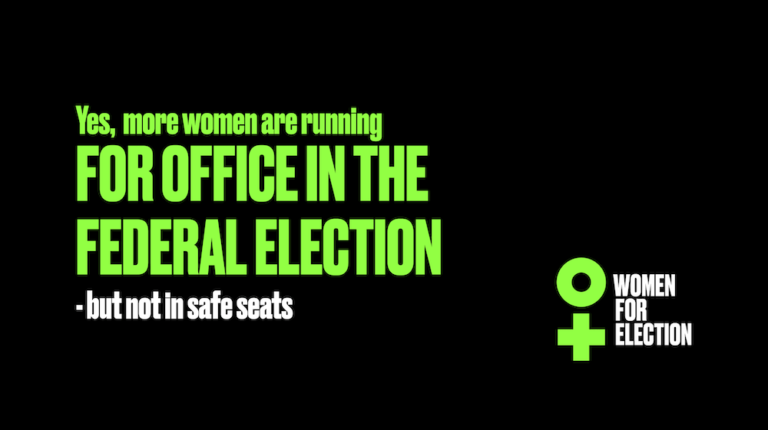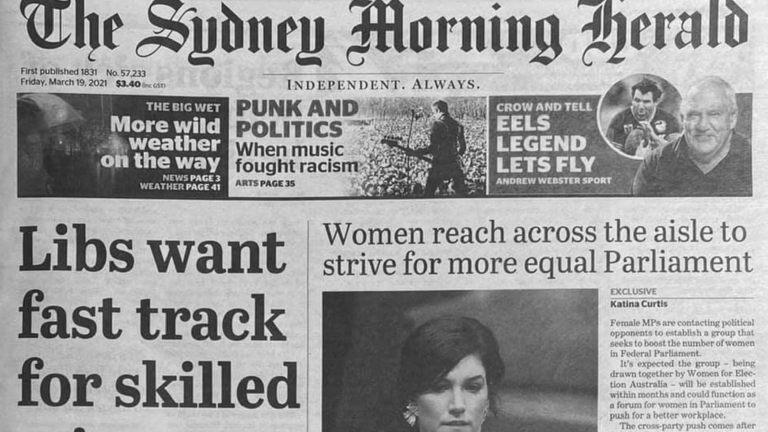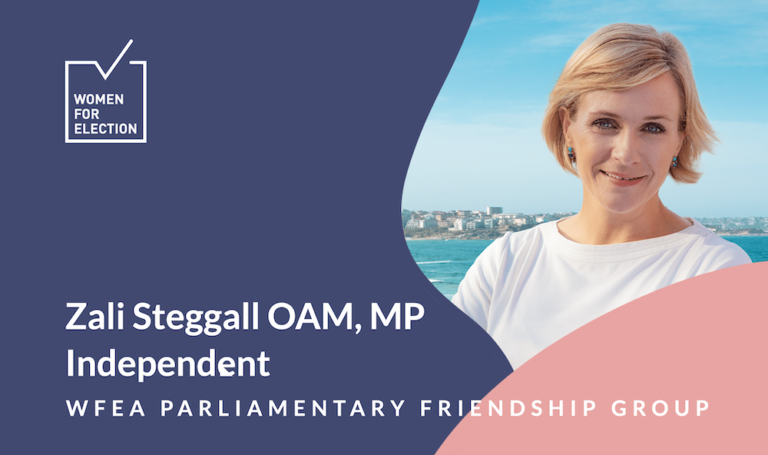Why a blue-collar budget in the year of pink-collar crisis is no surprise, and how we can do better
Much has been written about the impact of the COVID-induced recession and its disproportionate impact on women.
Where previous economic downturns have hit male-dominant sectors heavily, 2020 has seen female-dominated industries such as hospitality, administrative services and the arts hit hardest. More women than men have lost jobs or had their working hours slashed.
Conversely, other female-dominated industries are at the frontline in the battle against the pandemic. Fields including nurses, teachers, early educators and cleaners have worked tirelessly, finally getting the widespread praise they deserve. COVID has been a nightmare for the residential aged care sector, where women make up 87% of workers.[1]
The burden women have carried has not been limited to the workplace.
Women have continued to carry out two-thirds of unpaid care work at home.[2] Domestic violence has surged during COVID, with 8.8% of women in a relationship experiencing physical or sexual violence from a cohabitating partner between February and May 2020. And for 33% of those women, it was the first time they had experienced physical or sexual violence in their relationship.[3] Prior to COVID, domestic violence was, in our firm view, a national emergency. It’s now a spiralling tragedy that could etch deep scars for decades to come: not only on the women and families involved, but also our national psyche.
Much has also been written about the Government’s economic response to the crisis, especially in this month’s budget.
$240 million was dedicated to women-specific initiatives including cadetships and apprenticeships for women in STEM, job creation and entrepreneurialism, and women’s safety at work and at home. While they’re very worthy causes, journalists and thought leaders were quick to point out that this is but 0.0385% of the record-breaking $500 billion budget.
Despite COVID’s disproportionate impact on women, the Government’s instinctual stimulus response in the October budget targeted male-dominated industries, those only ‘middlingly afflicted’ by COVID’s curse: construction, manufacturing, infrastructure.
The Government’s reply to this critique was: “Women can take advantage of driving on the new infrastructure and roads.”[4] In other words, women will share equally in the fruits of the government’s stimulus. This ignores the fact that jobs are more than half the measure of an effective stimulus. And it mocks the role that women have played throughout this pandemic, and the short-lived acclaim they have received.
WFEA is non-partisan: we highlight these debates because they’re bigger than politics. It must be recognised that just a few people in the government have been involved with what we hope will be once-in-a-generation decisions. Australia continues to fair better than many other comparable countries, and for that we have reason to be proud.
In most instances, our leaders have opted for options that worked in the past: the familiar levers of a stimulus budget. Fair enough.
But without the input of women at the table, how can we expect leaders to view their decision-making through a lens which considers the economic, health and wellbeing of women, especially as this lens reflects the needs of not only one-half of the population but impacts society as a whole? There is enormous pressure regarding these decisions. How can we expect leaders to try different approaches to what is a radically different economic downturn?
According the United States’ CDC, amid a crisis we tend to hold onto current beliefs and not seek evidence that contradicts these beliefs.[5] There’s also an adage that our true character shines through amid a crisis. Nothing defines a government’s character more than the people at its helm. The key people at the helm of this budget are the Expenditure Review Committee (ERC), which includes the PM, Treasurer Frydenberg, Finance Minister Cormann, Deputy PM McCormack and Health Minister Hunt. No women.
There are formidable women in the Government, but the gender imbalance that exists in Cabinet and the ERC is acutely expressed in this landmark budget.
Women for Election Australia are determined to have more women, women of diverse cultural backgrounds, interests and experiences in Government to drive fairer outcomes and better public policy, benefiting everyone in society. We’re about ensuring that a rising tide lifts all boats. Better representation means that when our leaders are faced with tough decisions, the specific needs and challenges of women are front of mind. The critical role that women have maintained throughout the pandemic suggest that support for child care, health care workers and aged care are a no-brainer. That’s better for women. It’s better for men too. And better for all of Australia. Women belong at the table.

Andrew Butler, Director, Director WFEA
Andrew is a communications specialist and runs the Corporate Affairs agency, Wilkinson Butler.
With a background in political campaigning and policy development, Andrew has provided strategic and tactical communications support to organisations from a large variety of industry sectors, including not-for-profits.
Much of his focus is on managing complex issues and long-term reputational challenges.
As Chair of the PR & Government Relations Committee, Andrew brings to WFEA, expertise in strategic communications, campaigning, media engagement, government relations and strategy and stakeholder engagement.
Connect with Andrew on LinkedIn
Sources:
[1] Australian Institute of Health and Welfare, Aged Care
[2] Women’s Agenda, That women are the losers in *this* history-making big-spending budget is shameful
[3] Sydney Morning Herald, Domestic violence on the rise during pandemic
[4] Yahoo News, ‘Women drive on roads’: Government defends Budget







